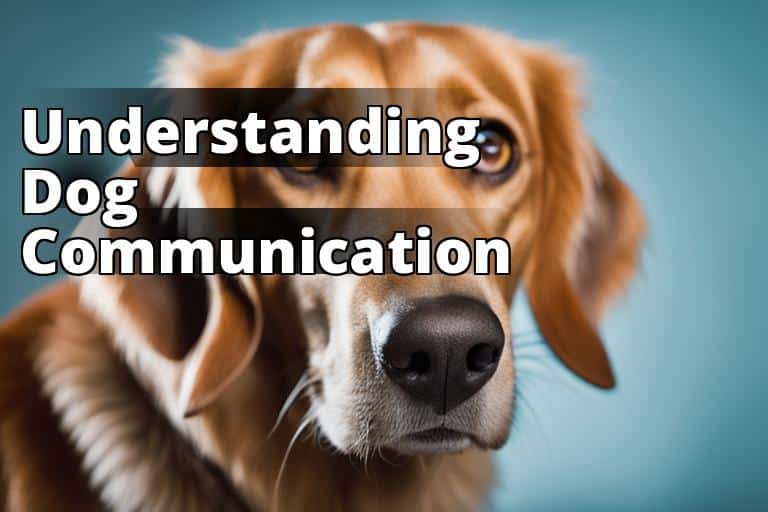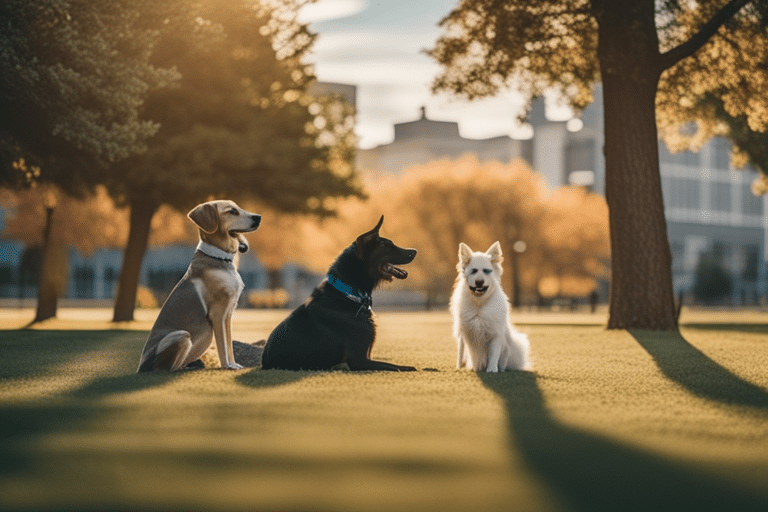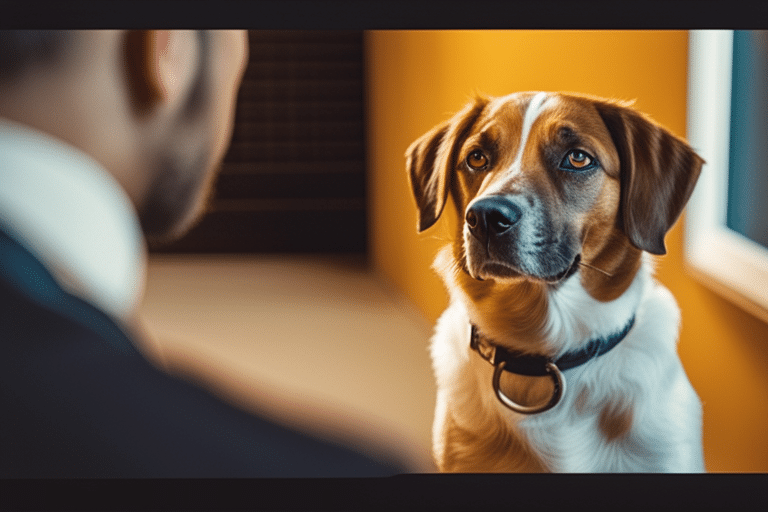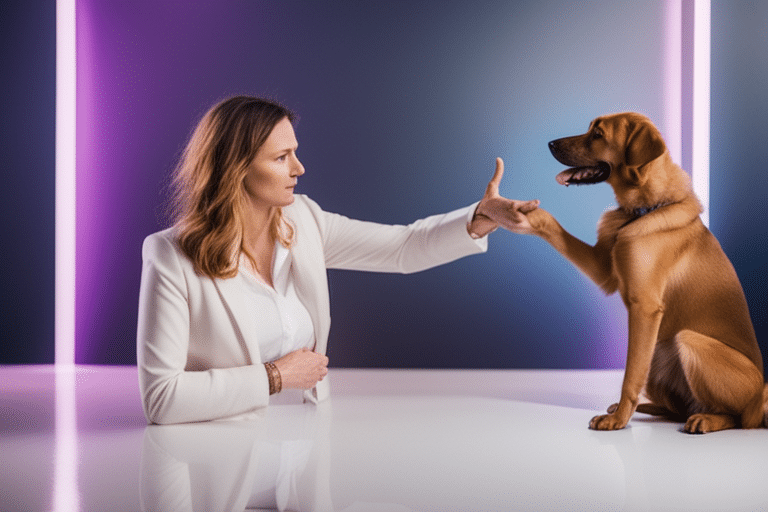

When it comes to understanding our canine companions, too many of us are stuck interpreting tail wags and barks like amateur cryptologists fumbling with a Rosetta Stone of woofs. Let’s cut through the noise, shall we? Dogs communicate with a sophistication that rivals the most eloquent orator, employing a symphony of signals that express everything from joyous exuberance to the deepest anxiety. It’s time to interpret these canine cues like a seasoned linguist.
Understanding Dog Communication
By reading this article, you will learn:
– Dogs communicate through barking, body language, tail wagging, eye contact, growling, jumping, whining or whimpering, licking, yawning, and sneezing.
– They use different forms of communication to express their feelings, needs, and desires to humans and other dogs.
– Understanding these communication signals can help you build a stronger bond with your furry friend.
Understanding Dog Communication
Picture this: a dog park on an early spring morning. A cacophony of barks fills the air, but to the trained observer, it’s a veritable conversation. Dogs, like any social creatures, have developed a nuanced system of communication that facilitates interaction not only with each other but also with us bipedal eavesdroppers.

Insider Tip: Pay attention to the context. A dog’s bark while playing fetch is vastly different from a bark at the mailman.
Barking
Barking is the canine equivalent of shouting from the rooftops. However, not all barks are created equal. There’s the ‘I’m bored’ bark, the ‘Alert! Stranger approaching!’ bark, and the ‘Hey! Let’s play!’ bark, to name just a few. As a dog owner, I’ve learned to distinguish my terrier’s ‘intruder alert’ bark from her ‘throw the ball already’ bark—and believe me, they couldn’t be more different.
For an authoritative perspective on the subject, I recommend checking out the work of Dr. Stanley Coren, who literally wrote the book on dog communication. Here’s an insightful piece on the psychology behind dog barking.
Body Language
The tilt of a head, the arch of a back, the stiffness in a stance—dogs speak volumes with their posture. Take my neighbor’s Greyhound, for instance: when she’s relaxed, her body is loose and wavy like a noodle. But let the postal worker approach, and she’s all taut lines and focused intent.

Insider Tip: Observe the ears. Are they pinned back or pointing forward? This can indicate fear or interest, respectively.
Tail Wagging
The wagging tail is the universal doggie smile, right? Wrong. Tail wags can convey a myriad of emotions, from the rapid-fire wag of excitement to the slow, deliberate swish of uncertainty. It’s all in the amplitude and frequency.
Eye Contact
When your dog locks eyes with you, it’s not just a staring contest; it’s a conversation. Direct eye contact can mean trust and affection in one context, or a challenge in another. Ever noticed the difference between a puppy’s wide-eyed gaze and the steely stare of a guarding dog? It’s all in the eyes.

Growling
Growling is not always the precursor to aggression; it’s also a way for dogs to say, ‘Back off.’ My friend’s shepherd growls when he’s hogging his favorite toy—it’s his way of setting boundaries.
Jumping
When a dog jumps up, it’s often trying to get closer to your face—to the epicenter of expression. It’s a form of greeting, albeit not always a welcome one, especially when it’s a mud-covered pooch on your freshly dry-cleaned suit.
Whining or Whimpering
Whining can be the canine equivalent of crying out in need or desire. My own dog whines with a high-pitched urgency when she’s desperate for a walk. It’s her plea, her siren song for adventure.
Licking
Ah, the doggie kiss. Licking can be a sign of affection, a grooming habit, or a submissive gesture. It’s multifaceted, much like a human handshake can mean hello, goodbye, or ‘I agree.’
Yawning
Yawning isn’t just for sleepy pups. It can be a sign of stress or anxiety. Next time you’re at the vet with your dog, take note: those yawns might be telling you your pal is less than thrilled to be there.
Sneezing
Sneezing during play is the dog’s way of saying, ‘Just kidding!’ It’s a signal that whatever roughhousing precedes or follows is all in good fun.
How to Communicate With Your Dog
Now, how do we talk back? It’s a dance of mutual respect and understanding. Consistent commands, positive reinforcement, and an open heart are key. Speak their language by respecting their signals, and you’ll be conversing like old friends in no time.

Insider Tip: Use hand signals along with verbal commands. Dogs respond remarkably well to visual cues.
Additional Insights
Do dogs understand what we say? Yes, to a degree. Dogs can learn to associate specific words with actions or objects. But it’s less about the word and more about the tone and context in which it’s said.
How do dogs communicate that they love you? Affectionate leans, a nuzzle, a trusting belly-up posture, or a contented sigh as they lay their head in your lap—all indicators of a love that’s pure and profound.
What are the communication patterns of dogs? Dogs communicate through a complex pattern of vocalizations, body language, facial expressions, and even scents. It’s a rich tapestry of information that they share with each other and with us.
How do dogs communicate when they are happy? A relaxed posture, a wagging tail, playful bows, and a general demeanor of eagerness and contentment are the hallmarks of a happy dog.
Also check out these additional resources: Understanding & Managing dog-on-dog aggression – Ways To Better Understand Your Dog’s Emotions – How Well Do You Know Your Dog?
In Conclusion
Understanding how dogs communicate is both an art and a science. It requires observation, patience, and a willingness to learn the subtleties of canine expression. The next time you’re with a dog, take a moment to really watch and listen. You might be surprised at just how much they’re saying.
Remember, while dogs might not speak our language, they have their own rich lexicon of communication—and if we’re attentive, we can become fluent in it.
Legal Disclaimer: The information provided in this article is for educational purposes only and is not a substitute for professional training or veterinary advice. If you have concerns about your dog’s behavior or communication, seek the guidance of a professional dog trainer or veterinarian.
Questions
Who do dogs communicate with?
Dogs communicate with other dogs and with humans.
What are some ways dogs communicate?
Dogs communicate through body language, barking, and whining.
How do dogs express their emotions?
Dogs express their emotions through their body posture and facial expressions.
What if I don’t understand my dog’s signals?
If you don’t understand your dog’s signals, seek professional help from a dog trainer or behaviorist.
How can I improve communication with my dog?
You can improve communication with your dog by learning their body language and responding appropriately.
What if my dog doesn’t seem to communicate much?
If your dog doesn’t seem to communicate much, observe their behavior and consult a veterinarian to rule out any health issues.




